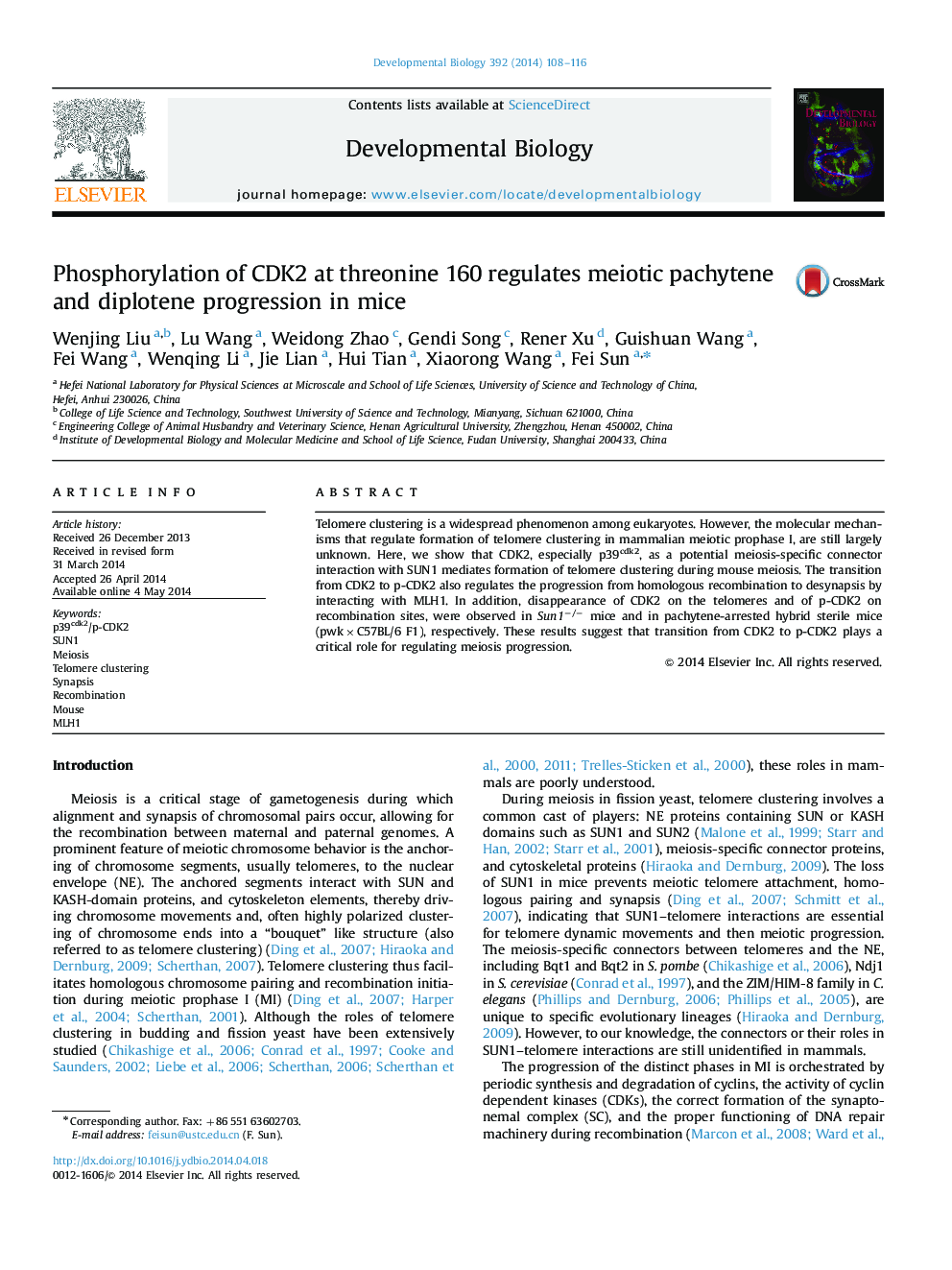| کد مقاله | کد نشریه | سال انتشار | مقاله انگلیسی | نسخه تمام متن |
|---|---|---|---|---|
| 2172982 | 1093658 | 2014 | 9 صفحه PDF | دانلود رایگان |

• CDK2 mediates formation of telomere clustering by interacting with SUN1.
• CDK2 mediates homologous recombination by interacting with MLH1.
• Transition from CDK2 to p-CDK2 plays a critical role in meiotic progression.
Telomere clustering is a widespread phenomenon among eukaryotes. However, the molecular mechanisms that regulate formation of telomere clustering in mammalian meiotic prophase I, are still largely unknown. Here, we show that CDK2, especially p39cdk2, as a potential meiosis-specific connector interaction with SUN1 mediates formation of telomere clustering during mouse meiosis. The transition from CDK2 to p-CDK2 also regulates the progression from homologous recombination to desynapsis by interacting with MLH1. In addition, disappearance of CDK2 on the telomeres and of p-CDK2 on recombination sites, were observed in Sun1−/− mice and in pachytene-arrested hybrid sterile mice (pwk×C57BL/6 F1), respectively. These results suggest that transition from CDK2 to p-CDK2 plays a critical role for regulating meiosis progression.
Journal: Developmental Biology - Volume 392, Issue 1, 1 August 2014, Pages 108–116